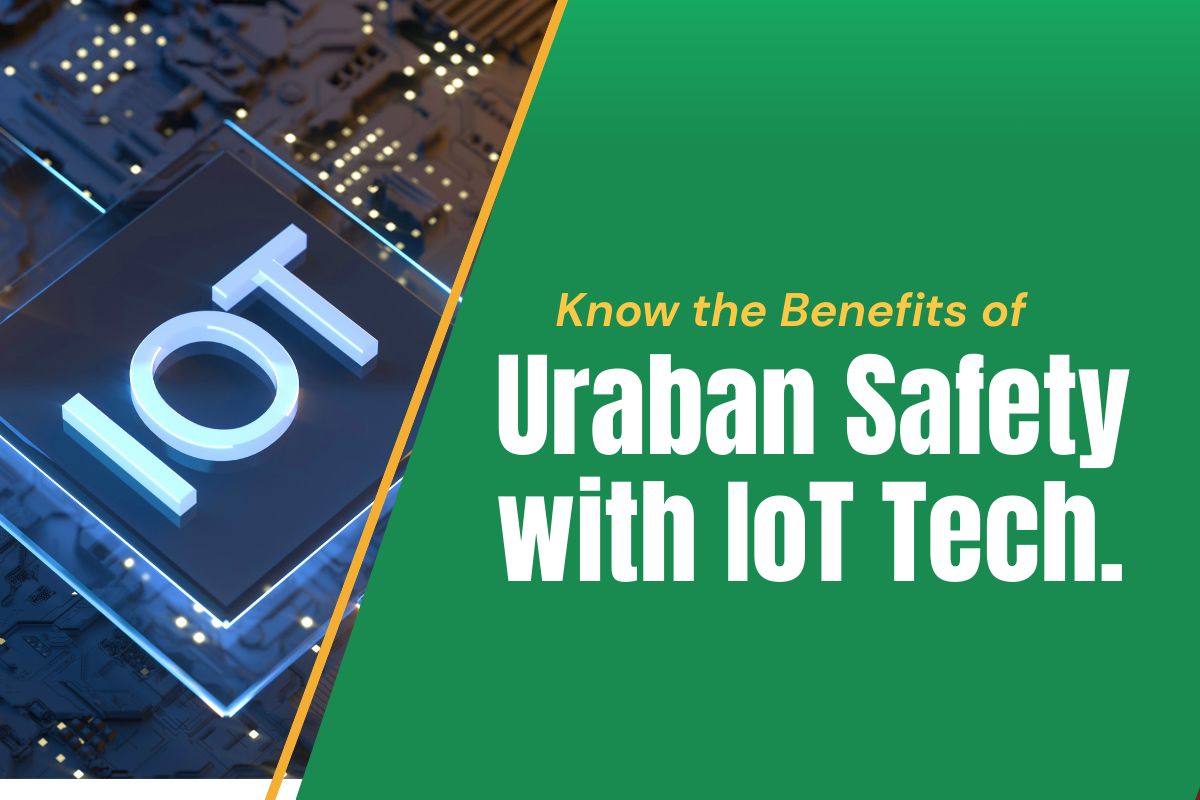
Know The Benefits of Urban Safety with IoT Technology
As cities grow larger and more complex, ensuring the safety of residents has become a top priority for urban planners. Smart infrastructure powered by the Internet of Things (IoT) is transforming how we monitor, manage, and respond to safety challenges in real time.
What is Smart Infrastructure?
Smart infrastructure integrates digital sensors, connectivity, and data analytics into physical urban systems — roads, buildings, utilities, and public spaces. It enables real-time monitoring and automated responses to improve safety, efficiency, and sustainability.
How IoT Enhances Urban Safety
a) Real-Time Surveillance & Crime Prevention
IoT-enabled CCTV cameras and AI-based video analytics can detect suspicious activities, alert law enforcement instantly, and help prevent crime before it escalates.
b) Disaster Management & Early Warning Systems
Smart sensors can detect earthquakes, floods, or fires in real time, sending immediate alerts to authorities and citizens to minimize damage and loss of life.
c) Traffic Safety & Accident Reduction
IoT-connected traffic signals and smart road sensors help monitor congestion, detect accidents, and adjust traffic flow to reduce hazards.
d) Public Health Monitoring
Air quality sensors and connected health stations track pollution levels, enabling timely interventions to prevent health crises.
Benefits of IoT in Smart Infrastructure
-
Faster Response Time – Automated alerts reduce human delay.
-
Data-Driven Decisions – Continuous data collection enables better planning.
-
Cost Efficiency – Preventive measures save money compared to post-incident recovery.
-
Public Confidence – Safer cities encourage community trust and growth.
The Future of Urban Safety with IoT
With 5G networks enabling faster data transfer and AI-powered analytics improving predictive capabilities, the next generation of smart cities will be even safer and more responsive.
Relevance for Competitive Exams
-
UPSC & HPAS: Comes under Science & Technology and Current Affairs
-
SSC & State Exams: Can be asked in General Awareness or General Knowledge sections
-
Essay & Mains: Useful as a real-life example in governance, urban development, and technology essays
GK Quick Note
-
IoT: Network of devices that communicate data without human intervention.
-
Smart Infrastructure: Technology-driven systems improving efficiency & safety.
-
Urban Safety Applications: Crime prevention, traffic management, disaster alerts, public health monitoring.
Conclusion:
IoT is not just making cities smarter — it’s making them safer. By integrating real-time data, predictive analytics, and automated responses, urban infrastructure can proactively protect citizens and respond to emergencies before they spiral out of control.
Tags
Current AffairsDigital India MissionDisaster ManagementGeneral KnowledgeGovernment Initiatives for Smart CitiesInfrastructure DevelopmentIoT in Smart CitiesPublic Safety TechnologiesReal-Time Monitoring SystemsScience and TechnologySmart City Projects in IndiaSmart InfrastructureSustainable Urban DevelopmentTechnology for Public SafetyTechnology in GovernanceTraffic Management SystemsUrban GovernanceUrban SafetyLatest Blogs
Ask your Query
Browse By Category
- Daily Current Affairs (4)
- EPFO (4)
- HP Allied (4)
- HPAS/HAS (14)
- IAS (16)
- Monthly Current Affairs (1)
- PCS (16)
- Uncategorized (1)
- UPSC (15)
- Weekly Current Affairs (2)
- Yearly Current Affairs (5)

Archives
- October 2025 (5)
- September 2025 (10)
- August 2025 (10)
- July 2025 (6)

 October 17, 2025
October 17, 2025






Leave Comment